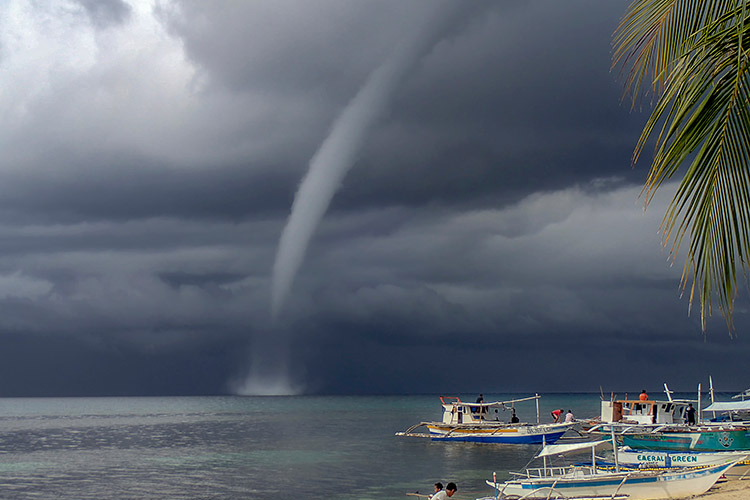
Waterspouts are tornadoes that form over water, or move from land to water
Geographical phenomena # 3: Waterspouts
The remarkable explained
By
Bank Holiday visitors to the Isle of Wight last August were more than slightly surprised when a giant waterspout twisted its way towards Whitecliff Bay. More than 100 metres high and travelling at speed, it fizzled out before hitting the coast, where it would have been reclassified as a tornado.
Nevertheless, the rarity of a waterspout approaching the UK was enough to gain prime slots on national television news that evening, with the Met Office explaining it was caused by heavy rain, exceptional even by British Bank Holiday standards.
Waterspouts, although occasionally seen in UK waters, are most likely to be found in tropical and sub-tropical seas. They are common along the southeast coast of the USA, particularly the Florida Keys, due to the ideal combination of warm sea temperatures and abundant atmospheric moisture.
These waterspouts typically form at sea during calm weather when a cumulus cloud and the water’s surface connect, creating a vortex. They tend to last from two to 20 minutes, move at speeds of ten to 15 knots (18–28 km/h) and have a diameter of up to 50 metres.
Five stages have been identified in their formation. First, a dark spot appears on the water surface, followed by a spiral pattern forming in the water. Next, a spray ring of water droplets, called a cascade, formed by the winds, rises into the air above. The ‘mature’ stage is reached when the spray vortex and a funnel from the cloud above are at their maximum strength, followed by the ‘decay’ phase as the water spout dissipates.
Tornadic waterspouts, on the other hand, usually start as land-based tornadoes caused by thunderstorms before moving out to sea. They can be far larger than those formed at sea and can wreak significant damage and reach incredible heights.

The most terrifying feature about a waterspout, similar to a tornado on land, is that it can pick up objects in its path, including people, animals, small boats and floating structures. Although such damage is rare, the devastation of the Grand Harbour of Malta in 1551 by a waterspout showcased their potential power, capsizing scores of boats and killing at least 600 people.
On 19 August 1896, on the Massachusetts coast, thousands of people witnessed one of the largest waterspouts ever recorded. Estimated at 1,095 metres in height and 256 metres at the crest, this waterspout persisted for more than 30 minutes. Black-and-white photos of the almost mile-high waterspout published in local newspapers made this one of the first to be documented on film.




